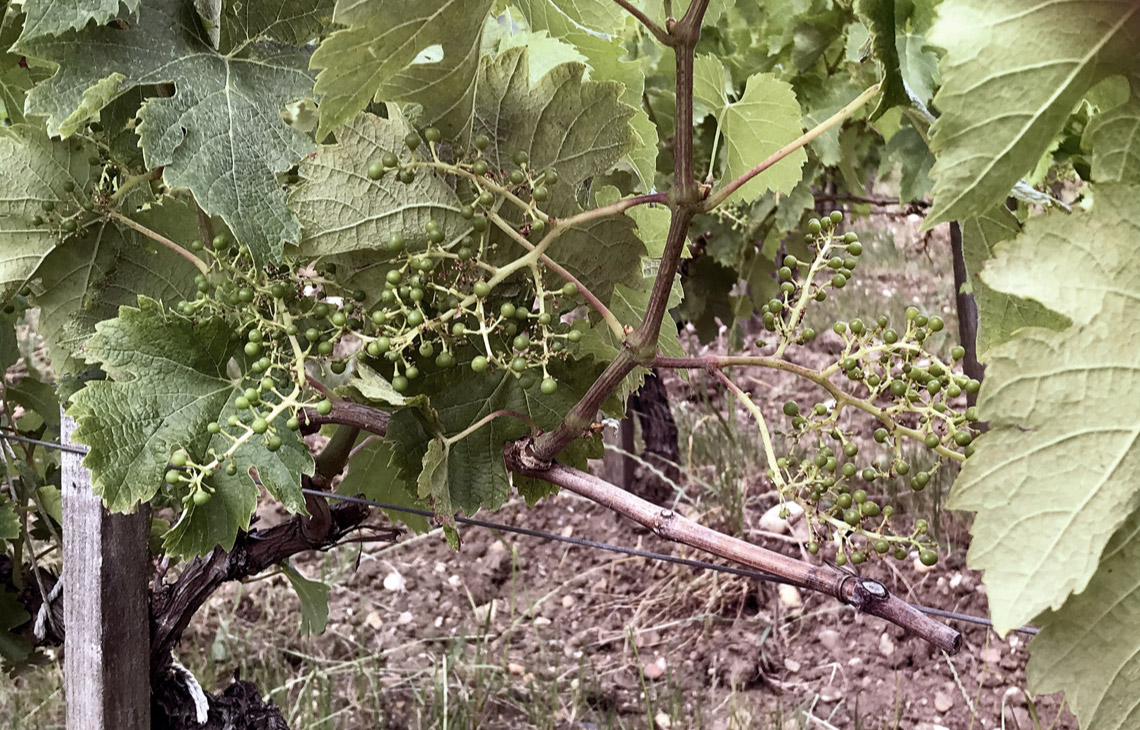In the vines
To work in the vineyards of Saint Estèphe, one of the most iconic appellations in the world, is to inherit an exceptional terroir, and the duty to protect it for future generations. Being a Responsible Vineyard naturally means adhering to strict specifications, but above all being worthy of this earth that has been entrusted to us, being conscious of the gift that we have been given.
The Château Tour de Pez estate is a gem whose splendour can only be revealed by respecting nature, and by adopting sustainable cultivation methods with sensitivity, discernment, and precision.


It is a vineyard of modest size and, like all of the appellation, is extremely fragmented…in 19 hectares there are no less than 39 parcels. Grouped in three main areas known as Haillan, Coutelin and Hôpital, they are occasionally interspersed with three rows belonging to a neighbour. If you are passing by you can recognize the vines belonging to Château Tour de Pez by their green stakes!
They are planted at a density of 8,000 vines per hectare, which corresponds to 1 metre between rows and vines, as is traditional in Saint Estèphe.
Its varied soils of clay and limestone clay are the terroirs of the future. In this part of the Médoc the chalk bedrock sometimes breaks through as there are fewer deposits of river gravel. The soils of Saint Estèphe form a mosaic that is more often sandy-clay or limestone-clay than the other communal appellations of the Médoc.
These fresher terroirs present an advantage in the face of climate change. Vines planted in deep gravel soils suffer during periods of intense heat, resulting in lower yields and wines that run the risk of losing their precious balance with age. In contrast, clay has superior water retention qualities, and the vines therefore suffer less hydric stress, develop better, and produce juicier grapes. This diversity of terroirs that is unique to Saint Estèphe means it is less vulnerable to the vagaries of the climate, making its Crus the wines of the future. There is also a proportion of Cabernet Franc in the vineyard, a specificity that sets it apart. Although it represents 11% of the Château Tour de Pez estate, it is vinified separately and precisely dosed in the blend according to the profile of each vintage.

‘‘ The soils of Saint Estèphe form a mosaic that is more often sandy-clay or limestone-clay than the other communal appellations of the Médoc. These fresher terroirs present an advantage in the face of climate change. ’’
It is now a Responsible Vineyard, with totally new vineyard management practices. 2019, when it was taken over by Vignobles de Larose, marked a turning point for the Château, firstly with the immediate halt to weeding and the reinstatement of tilling in all the parcels. This natural working of the soil encourages the vine roots to plunge deeper into the earth, making the plant more vigorous and resistant. The root systems begin to adapt to this new regime after around two to three years, in other words from the year 2020, and will continue to improve over another five to eight years. Nature takes its time but, coupled with the rigour and the scrupulous attention of its custodians, it always gives of its best.
This work of improving the terroir is adapted individually to each parcel, notably in terms of cover crops, designed to create just the right amount of competition to the vigour of the vines’ foliage, with specific varieties of clovers and grasses being selected for each parcel. Leaf thinning has also been introduced to encourage grape maturity, and green harvesting to select the best bunches and control yields.

‘‘ 2019, when it was taken over by Vignobles de Larose, marked a turning point for the Château, firstly with the immediate halt to weeding and the reinstatement of tilling in all the parcels. ’’

‘‘ Each new year is, of course, a blank page in viticulture. But the attention that is paid to the plant, the care that is given to the terroir and the evolution in the climate make Château Tour de Pez an elegant, highly appreciated Cru, certified Terra Vitis and corresponding to organic specifications, whose future is unquestionably bright. ’’

